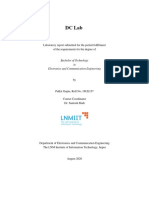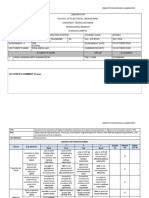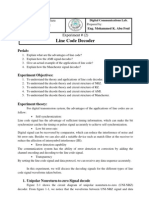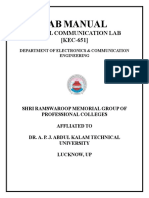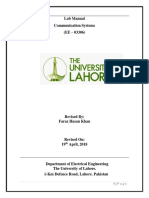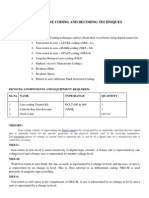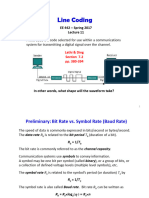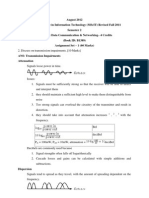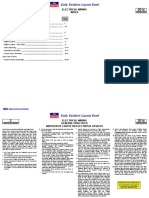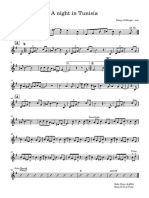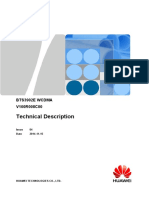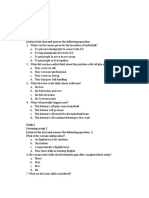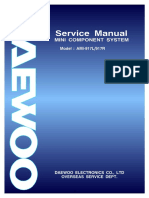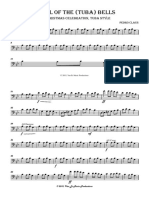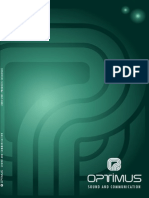0% found this document useful (0 votes)
88 views16 pagesLine Coding and Bit Clock Recovery
The document discusses line coding and bit-clock regeneration in digital communication systems, explaining how different line codes represent digital signals and their implications for transmission. It details four specific line codes (NRZ-L, Bi-phase level, RZ-AMI, and NRZ-M) and compares their bandwidth requirements and effectiveness in bit-clock regeneration. The document also outlines an experiment to observe these line codes in both time and frequency domains, and to analyze their spectral compositions for practical applications in telecommunications.
Uploaded by
Gabriel PelaezCopyright
© © All Rights Reserved
We take content rights seriously. If you suspect this is your content, claim it here.
Available Formats
Download as DOCX, PDF, TXT or read online on Scribd
0% found this document useful (0 votes)
88 views16 pagesLine Coding and Bit Clock Recovery
The document discusses line coding and bit-clock regeneration in digital communication systems, explaining how different line codes represent digital signals and their implications for transmission. It details four specific line codes (NRZ-L, Bi-phase level, RZ-AMI, and NRZ-M) and compares their bandwidth requirements and effectiveness in bit-clock regeneration. The document also outlines an experiment to observe these line codes in both time and frequency domains, and to analyze their spectral compositions for practical applications in telecommunications.
Uploaded by
Gabriel PelaezCopyright
© © All Rights Reserved
We take content rights seriously. If you suspect this is your content, claim it here.
Available Formats
Download as DOCX, PDF, TXT or read online on Scribd
/ 16











